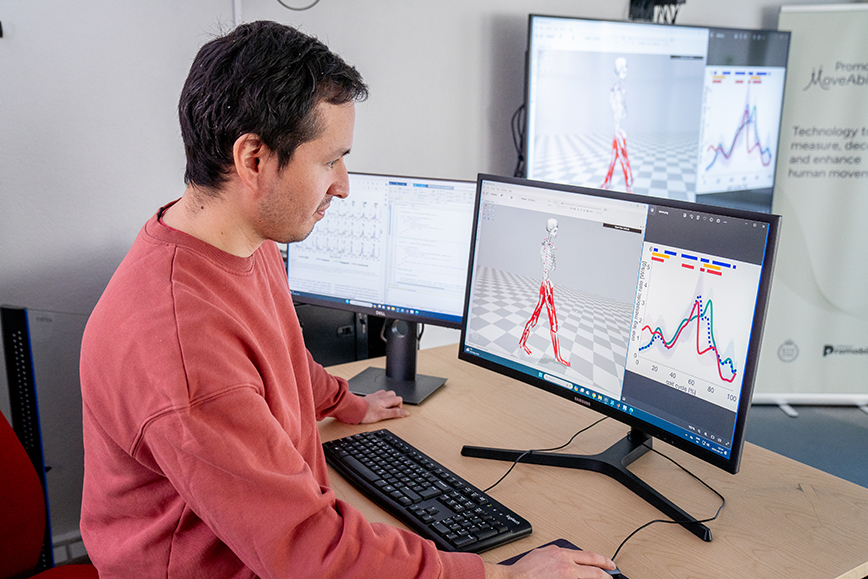Modeling and simulating walking mechanics and energetics
Interview with Israel Luis Peña

Israel Luis Peña has presented his PhD thesis at KTH. We talked with him about how this research can help enhance mobility in older adults and people with motion disorders.
Hi Israel Luis, tell us about your thesis
My thesis is about modelling and simulating walking mechanics and energetics in unassisted and assisted conditions. Primarily, I aimed to provide an accurate prediction of metabolic energy cost, as well as the benefits of using a wearable assistive device in the lower limbs.
Link to thesis
How can your findings contribute to persons with motor disability?
My research was dedicated to better understanding the role of muscle architecture and neuromuscular control during motion in unassisted and assisted conditions. With this information, we aim to identify the optimal assistance based on the user’s biomechanical characteristics to perform physical activities more efficiently. Our work might be applied to enhancing mobility in older adults and people with motion disorders.
With the thesis achieved, what is your next step?
I aim to quantify, predict, and enhance human performance using assistive devices. My current interest is blending predictions using musculoskeletal simulations with experimental evaluations in laboratory and outdoor environments. I look forward to exploring the benefits of assistive technology in real-world scenarios.
Finally, what is your background?
I studied mechatronics engineering at the Pontificia Universidad Catolica del Peru (PUCP). I was the president of the IEEE RAS student branch during my undergraduate studies. After graduation, I was a member of the research group GIRAB (Applied Robotics and Biomechanics Group) at PUCP. I did an internship at Michigan State University during my work at GIRAB-PUCP. My internship was about modeling posture and balance. In my free time, I used to practice parkour, and currently, I play the drums.
Visit Israel Luis Peña's profile page
